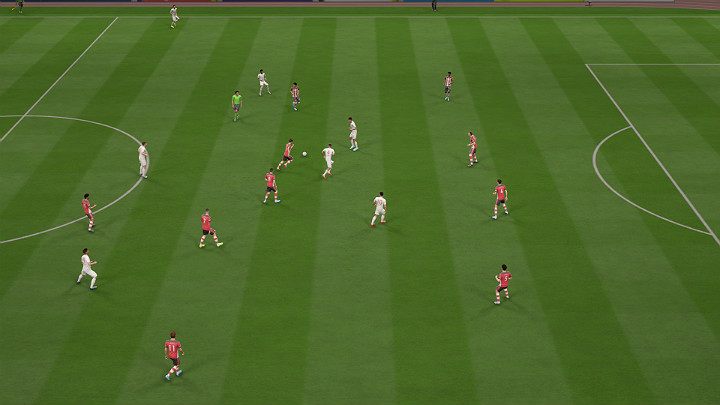FIFA 20: Performing a positional attack and a counter
Last update:
The moment you manage to take the ball, you have to start creating an offensive action. This process can be divided into several stages that will allow for the invasion of the enemy's infield and the shot put into the goal.
- Fighting for the ball in the center of the field
- Preparing a positional attack
- One touch plays
- Counters
Fighting for the ball in the center of the field

In FIFA 20 it is very important to control the center of the field, which is a strategic point of the pitch. It is always worth fighting for each ball, e.g. kicked by the goalkeeper and try to push it towards one of your players. Taking the ball after the goalie resumes the game gives you an instant chance to launch a quick counterattack or launch a positional attack.
Preparing a positional attack

Preparing an effective positional attack requires a lot of patience and precision when performing a lot of short passes in a small space. Performing a positional attack requires performing even up to a few dozen passes to slightly break the enemy's defense and find a gap that allows the action to develop. When constructing actions, use all available resources. For example, connect one-touch plays with moving the ball at a free position. Such plays are quite fast and do not allow the enemy to respond with a defense of their own.
One touch plays
One-touch plays are an extremely effective way to break down an opponent's defense by performing quick and short passes in a small space. The one-touch game forces the opponent to engage more players in attempting to retrieve the ball, whereby your player gets a chance to break out from under cover and getting a perpendicular pass to an undefended zone.
Counters
When trying to return with a counterattack, many factors must be considered, such as the accuracy and speed of the ball play, an error in trying to intercept the ball from the opponent, an unsuccessful or too short pass, a technical error, etc. Any, even the slightest mistake of your rival can be used. The vast majority of counters is carried out by the wings of the field, where you have fast players capable of taking on the far ball. Such plays often result in a cross into the penalty area, creating dangerous scoring chances or pulling the player directly into the penalty area. The second way to bring out a counterattack is to play the ball in midfield, releasing one long pass perpendicularly (above or on the ground) at the running player, who will have a chance to finish the action one-on-one with the goalkeeper.
You are not permitted to copy any image, text or info from this page. This site is not associated with and/or endorsed by the developers and the publishers. All logos and images are copyrighted by their respective owners.
Copyright © 2000 - 2025 Webedia Polska SA for gamepressure.com, unofficial game guides, walkthroughs, secrets, game tips, maps & strategies for top games.
